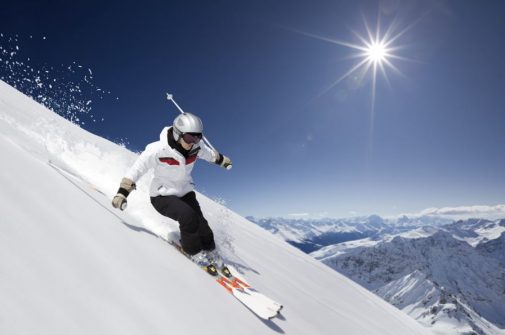Don’t let Olympic fun become devastating

With its soaring snowboarders, speeding skaters and skiers, hard-hitting hockey players and more, the 2018 Winter Olympics likely will inspire many to get out and participate in winter sports.
These cold-weather sports are fun and healthy for all ages, but slippery surfaces and potentially high speeds of some of these activities can lead to injury.
Concussions and other traumatic brain injuries are particularly common results of the slips and falls associated with these snow- and ice-based sports. A recent study of some popular extreme sports showed that rates of general head and neck injuries were relatively high among skiers and snowboarders, and snowboarding carried the highest risk of concussion.
Dr. Marc Hilgers, a sports medicine physician and concussion expert with Advocate Medical Group in Aurora, Ill., says that risks of winter activity need to be considered in order to reap their fullest rewards.
“It’s important that people stay active during the cold weather months, but they need to take into account their long-term health and wellness,” he says. “You only have one brain, and you should take steps to protect it from potentially devastating injury.”
Dr. Hilgers says there are several general precautions that partakers of any potentially dangerous winter sport should take:
Always wear a properly fitted helmet and replace it after a serious fall, if appropriate.
The snow may seem soft, but trees, ice and other people aren’t. Dr. Hilgers strongly recommends wearing a certified helmet appropriate for your activity. If you are wearing a hat to stay warm, he reminds everyone to be sure the helmet still fits correctly. Another important factor to consider is that some helmets are built to only withstand a single impact, while others can safely handle more than one, depending on the severity. Dr. Hilgers reminds users to know what their helmets are meant to take, and to err on the side of caution.
Have fun. But know your limits.
You don’t need to be a Linsey Vonn-level skier or snowboard like Shaun White your first time out, says Dr. Hilgers. Take lessons and learn fundamentals that will keep you safe while you work out the more advanced moves over time. Dr. Hilgers stresses that a few lessons with an expert can prevent frustration and injury that come with working it out yourself. And, don’t forget about the kids. Children should never ski, snowboard or skate without supervision.
Be familiar with your surroundings and stay alert.
Before firing down that hill or across the rink at full go, be sure to take a moment to assess what’s going on around you. Dr. Hilgers says to be on the lookout for blind spots, turns and sudden drops. When skiing or snowboarding, he adds, newbies should stay near the center of the trail or hills, and they should never ski close to trees. He also counsels against wearing headphones, which can impede your ability to know what’s going on around you.
Be aware of the warning signs of concussions.
If you or someone you are with wipes out hard, it is important to recognize the warning signs of a concussion.
Signs and symptoms of a concussion can appear immediately after an injury, or they may show up days after the fact. According to Dr. Hilgers, concussion symptoms can include:
- Headaches
- Weakness
- Numbness
- Trouble with coordination or balance
- Confusion
- Slurred speech
- Nausea or vomiting
“If you or someone you are with has any of these symptoms after a winter sports tumble, you should seek medical attention right away,” says Dr. Hilgers. “And, if a person loses consciousness after a fall, call 911 or get emergency medical help immediately.”
Specially trained physicians like Dr. Hilgers now have various ways to accurately diagnose and effectively treat concussions. He recommends people work with their primary care physician to identify a specialist whocan assist with possible concussions and their after-effects.
Related Posts
Comments
One Comment
About the Author
Nate Llewellyn, health enews contributor, is a manager of public affairs at Advocate Medical Group. Nate began his career as a journalist and builds daily on his nearly 20 years of writing experience. He spends most of his free time following his wife to their two sons’ various activities.


















Be aware of sun poisiining especially when skiing at altitude.